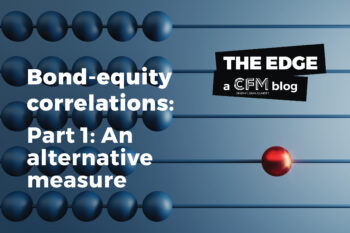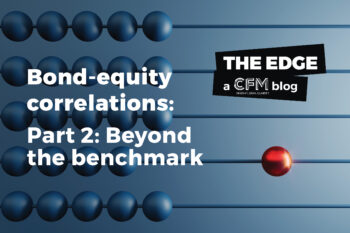The Bureau of Labor Statistics (BLS) is responsible for measuring consumer price inflation in the United States. Although many of us are familiar with various headline statistics (CPI, core CPI, super-core CPI, etc.), the official report goes into incredible granularity. This lets one choose any number of components to create a very personalized CPI basket (the authors would include a combination of ‘Pet Food’, ‘Day Care and Preschool’, and for obvious reasons, ‘Whiskey at Home’).
One useful aggregation of these components is by region. The BLS uses regions defined by the official Census, and includes the Northeast, Midwest, South, and West. Looking at their respective inflation over the past 40-years, we noticed a surprising result: the United States has become more integrated, at least when it comes to regional consumer prices.
Correlations between these four regions have grown since data began, and currently sit near their highest level. For instance, in the 1990s, inflation pressures varied depending on where you lived, when the four regions’ CPI had a correlation with headline inflation of 0.6 – 0.7. And although data is more limited in the 1980s, this range was even wider at 0.4 – 0.7.
In the past 5 years, this has jumped to a range of 0.8 – 0.9, and the average pairwise correlation between regions sits at 0.84 (see figure 1).
One intuitive outcome of this trend is that higher correlation between regions increases the volatility of nationwide CPI (similar to how portfolio volatility increases if its constituent’s correlations increase). As a result, despite decade-low levels of inflation in the 2010s, monthly CPI was more volatile than in the 1990s, despite being almost half the average level. If we plot MoM CPI volatility against regional correlations by year, we see a notable positive relationship (see figure 2).
One provocative thought that comes from this: what impact might this trend have in upcoming US elections? Inflation is often a campaigning centerpiece. Messaging on inflation might have felt diluted in prior decades if regions were feeling price pressures uncorrelated with the rest of the country. However, with regional inflation correlations as high as they are today, inflation messaging likely finds greater commonality.
What might be behind this increase? Possible reasons could include the internet leveling the playing field for pricing and subsequent rise in interstate commerce. More transparent housing and rental prices. Similarly for health insurance.
Unfortunately for the authors, it looks like it will be difficult to find reasonable regional arbitrage for ‘Whiskey at Home’.
DISCLAIMER
ANY DESCRIPTION OR INFORMATION INVOLVING MODES, INVESTMENT PROCESSES OR ALLOCATIONS IS PROVIDED FOR ILLUSTRATIVE PURPOSES ONLY AND DOES NOT CONSTITUTE INVESTMENT ADVICE NOR AN OFFER OR SOLLICITATION TO SUBSCRIBE FOR ANY SECURITY OR INTEREST. ANY STATEMENTS REGARDING CORRELATIONS OR MODES OR OTHER SIMILAR BEHAVIORS CONSTITUTE ONLY SUBJECTIVE VIEWS, ARE BASED UPON REASONABLE EXPECTATIONS OR BELIEFS, AND SHOULD NOT BE RELIED ON. ALL STATEMENTS HEREIN ARE SUBJECT TO CHANGE DUE TO A VARIETY OF FACTORS INCLUDING FLUCTUATING MARKET CONDITIONS AND INVOLVE INHERENT RISKS AND UNCERTAINTIES BOTH GENERIC AND SPECIFIC, MANY OF WHICH CANNOT BE PREDICTED OR QUANTIFIED AND ARE BEYOND CFM’S CONTROL. FUTURE EVIDENCE AND ACTUAL RESULTS OR PERFORMANCE COULD DIFFER MATERIALLY FROM THE INFORMATION SET FORTH IN, CONTEMPLATED BY OR UNDERLYING THE STATEMENTS HEREIN. CFM ACCEPTS NO LIABILITY FOR ANY INACCURATE, INCOMPLETE OR OMITTED INFORMATION OF ANY KIND OR ANY LOSSES CAUSED BY USING THIS INFORMATION. CFM DOES NOT GIVE ANY REPRESENTATION OR WARRANTY AS TO THE RELIABILITY OR ACCURACY OF THE INFORMATION CONTAINED IN THIS DOCUMENT.





